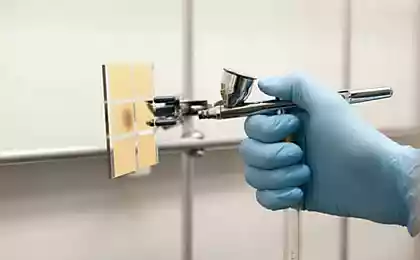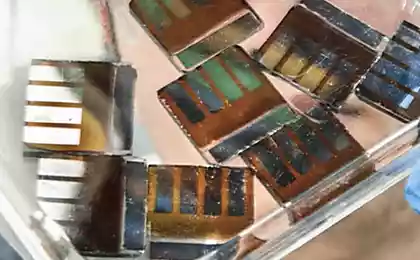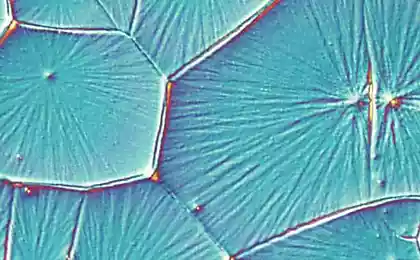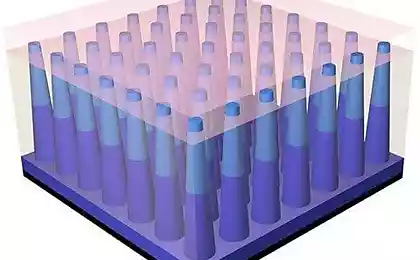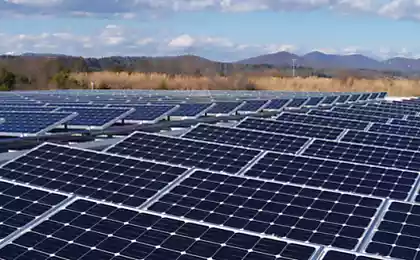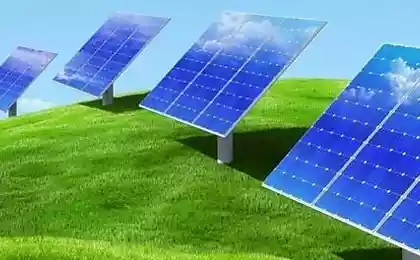544
Created a solar cell of perovskite with record efficiency
Scientists at the University of California at Berkeley and National laboratory. Lawrence Berkeley have created solar cells from perovskite with a peak efficiency of 26%."We set a record on several parameters perovskite solar cells, including productivity, said study leader Professor Alex Zettl. — Their productivity is higher than other perovskites elements of 21.7% — a phenomenal number considering that we are just starting to optimize them." While the peak efficiency of new solar cells reaches 26%.
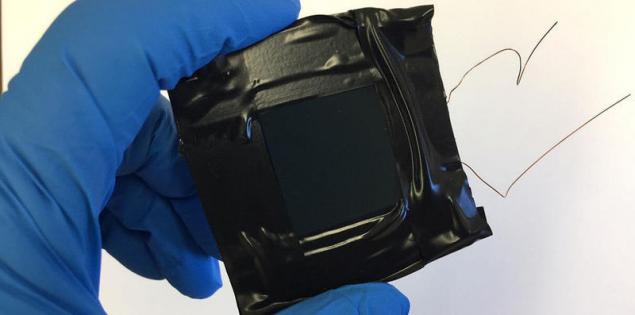
The efficiency of these devices is superior and polycrystalline silicon cells that generate electricity in most electronic devices, as well as homes. Even the purest silicon solar cells are very expensive to produce, have a peak performance of about 25%, and you can't beat it for ten years.
The breakthrough came by combining the two perovskite of materials, each of which absorbs different wavelengths of sunlight, so that the resulting "step" element absorbs almost the entire visible light spectrum. Past attempts to combine two perovskite material failed because they reduced each other's performance.
The link between the two materials was the layer of hexagonal boron nitride, and the perovskites consisted of organic molecules and bromide of ammonia, but in one there was also a tin and iodine, and the other lead and iodine with bromine impurities. The first layer is intended for light with energy of 1 electron volts, and the second absorbed photons with energy 2 eV.
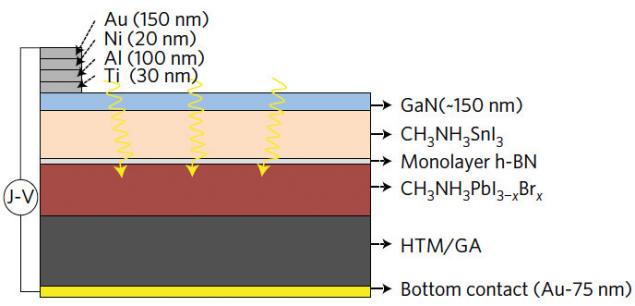
This sandwich scientists grafenauer coated with aerogel, which helps to stabilize the transport of charges through the solar cell and repels harmful to the perovskites moisture. Bottom this design connected with a gold electrode, and the top — layer of gallium nitride that collects generated electrons element. The active layer of such solar cells is obtained at a thickness of about 400 nm.
"These new materials can be produced as coils, mass. It's almost as simple as paint aerosol," says Professor Zettl.
Scientists of the same laboratory Lawrence Berkeley has found a theoretical method to significantly improve the efficiency perovskite solar cells, using the uneven terrain of this mineral. This method can raise the performance of perovskites to 31%. published
Source: hightech.fm/2016/11/10/solar-cells-perovskite

The efficiency of these devices is superior and polycrystalline silicon cells that generate electricity in most electronic devices, as well as homes. Even the purest silicon solar cells are very expensive to produce, have a peak performance of about 25%, and you can't beat it for ten years.
The breakthrough came by combining the two perovskite of materials, each of which absorbs different wavelengths of sunlight, so that the resulting "step" element absorbs almost the entire visible light spectrum. Past attempts to combine two perovskite material failed because they reduced each other's performance.
The link between the two materials was the layer of hexagonal boron nitride, and the perovskites consisted of organic molecules and bromide of ammonia, but in one there was also a tin and iodine, and the other lead and iodine with bromine impurities. The first layer is intended for light with energy of 1 electron volts, and the second absorbed photons with energy 2 eV.

This sandwich scientists grafenauer coated with aerogel, which helps to stabilize the transport of charges through the solar cell and repels harmful to the perovskites moisture. Bottom this design connected with a gold electrode, and the top — layer of gallium nitride that collects generated electrons element. The active layer of such solar cells is obtained at a thickness of about 400 nm.
"These new materials can be produced as coils, mass. It's almost as simple as paint aerosol," says Professor Zettl.
Scientists of the same laboratory Lawrence Berkeley has found a theoretical method to significantly improve the efficiency perovskite solar cells, using the uneven terrain of this mineral. This method can raise the performance of perovskites to 31%. published
Source: hightech.fm/2016/11/10/solar-cells-perovskite



